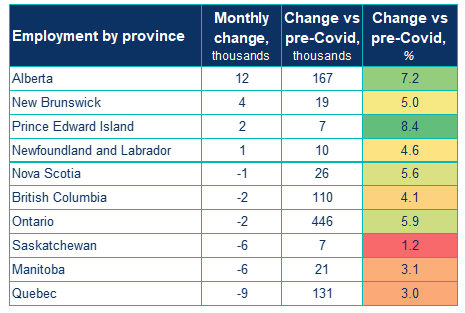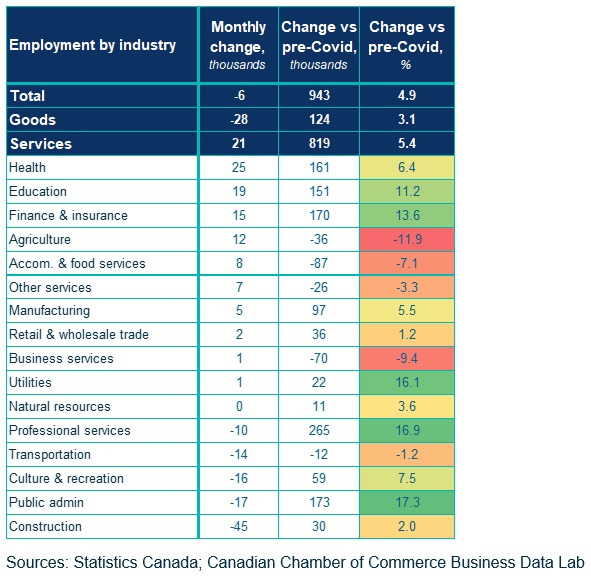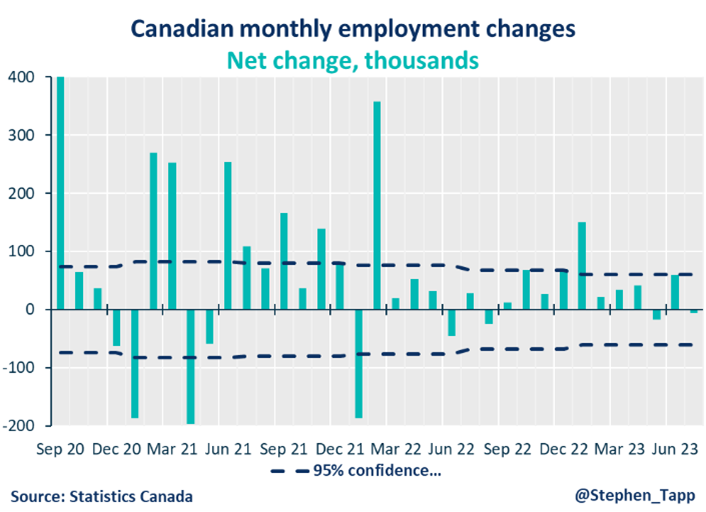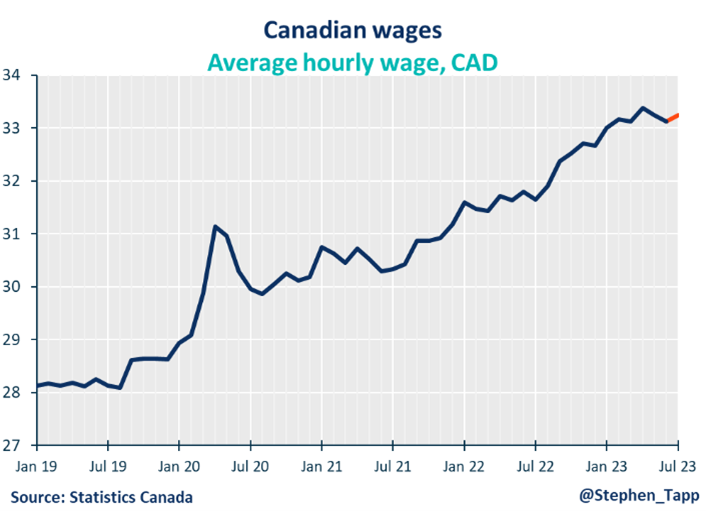Commentaries /
July 2023 LFS: Unemployment rate has a modest uptick with little change in job growth.
July 2023 LFS: Unemployment rate has a modest uptick with little change in job growth.
With July’s labour force data, Canada’s unemployment rate has now been rising for the third consecutive month, reaching 5.5%. While...



Marwa Abdou

With July’s labour force data, Canada’s unemployment rate has now been rising for the third consecutive month, reaching 5.5%. While the lackluster report was well below market expectations, with a net of -6.4K as compared to the expected +20-25K job gains, it holds steady the picture of a loosening job market. The most noteworthy component of the report is the rebound in average hourly wages, raising 5.0% year-over-year. As the only jobs report ahead of the next policy decision in early September, it is unlikely that this will be enough to raise concerns. This is especially true considering the anticipated boost in the pool of workers due to high levels of immigration. This influx, combined with slowing demand, may ease the pace of growth in the job market.
Marwa Abdou, Senior Research Director, Canadian Chamber of Commerce
KEY TAKEAWAYS
- The unemployment rate edged up slightly to 5.5% from June’s 5.4%. Canadian employment gains were little changed in July, falling by 6,000 jobs — below market expectations of a gain of 25k. This comes after 60k jobs added in the rebound from June’s uptick.
- While Canada’s population continues to grow, employment in July for part-time work and full-time held steady. Declines in employment, while broad based, were highest in construction (-45K, -2.8%). This was followed by public administration (-17K; -1.4%), information, culture, and recreation (-16K; -1.8%) as well as in transportation and warehousing (-14K; -1.3%). Overall, declines were offset by gains in health care and social assistance (+25K; +0.9%), educational services (+19K; +1.3%), finance, insurance, real estate, rental, and leasing (+15K; +1.1%) and agriculture (+12K; +4.6%).
- By gender, employment was amongst women saw little variation as we saw decline in jobs for core-aged men aged 25-54 years old (-27K, -0.4%) while jobs among male youth aged 15-24 saw a modest gain (+13K; +0.9%).
- While hours worked also remained unchanged, perhaps the most noteworthy component of the report came by way of average hourly wages. On a year-over-year (y-o-y) basis, average hourly wages rose 5.0% (+$1.59 to $33.24) in July, following increases of 4.2% in June and 5.1% in May (not seasonally adjusted). The pace of wage growth was the same for core-aged men and core-aged women albeit, wages grew at faster rate for full-time employees (+5.2% to $34.95) than for those working part-time (+4.7% to $23.50).
- Regionally, provincial employment rose in Alberta (+12K; +0.5%), New Brunswick (+4.2 K; +1.1%), and Prince Edward Island (+1.5K; +1.7%), while it decreased in Manitoba (-6.4K; -0.9%) and Saskatchewan (-5.7K; -1.0%) and was little changed in the other provinces).
SUMMARY TABLES



MORE LABOUR CHARTS





Other Commentaries

Oct 19, 2022
September 2022 Consumer Price Index data: Food and services prices still rising, no progress on core inflation

Sep 20, 2022
August 2022 Consumer Price Index data: Finally some good news on Canadian inflation.

Aug 16, 2022